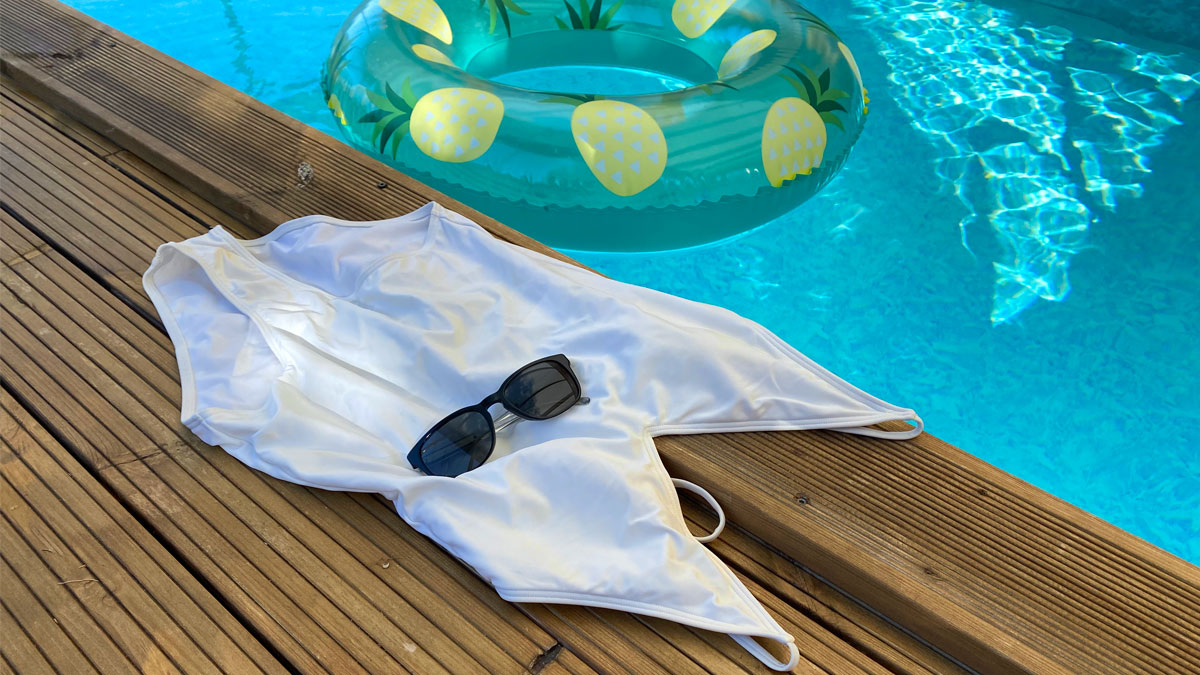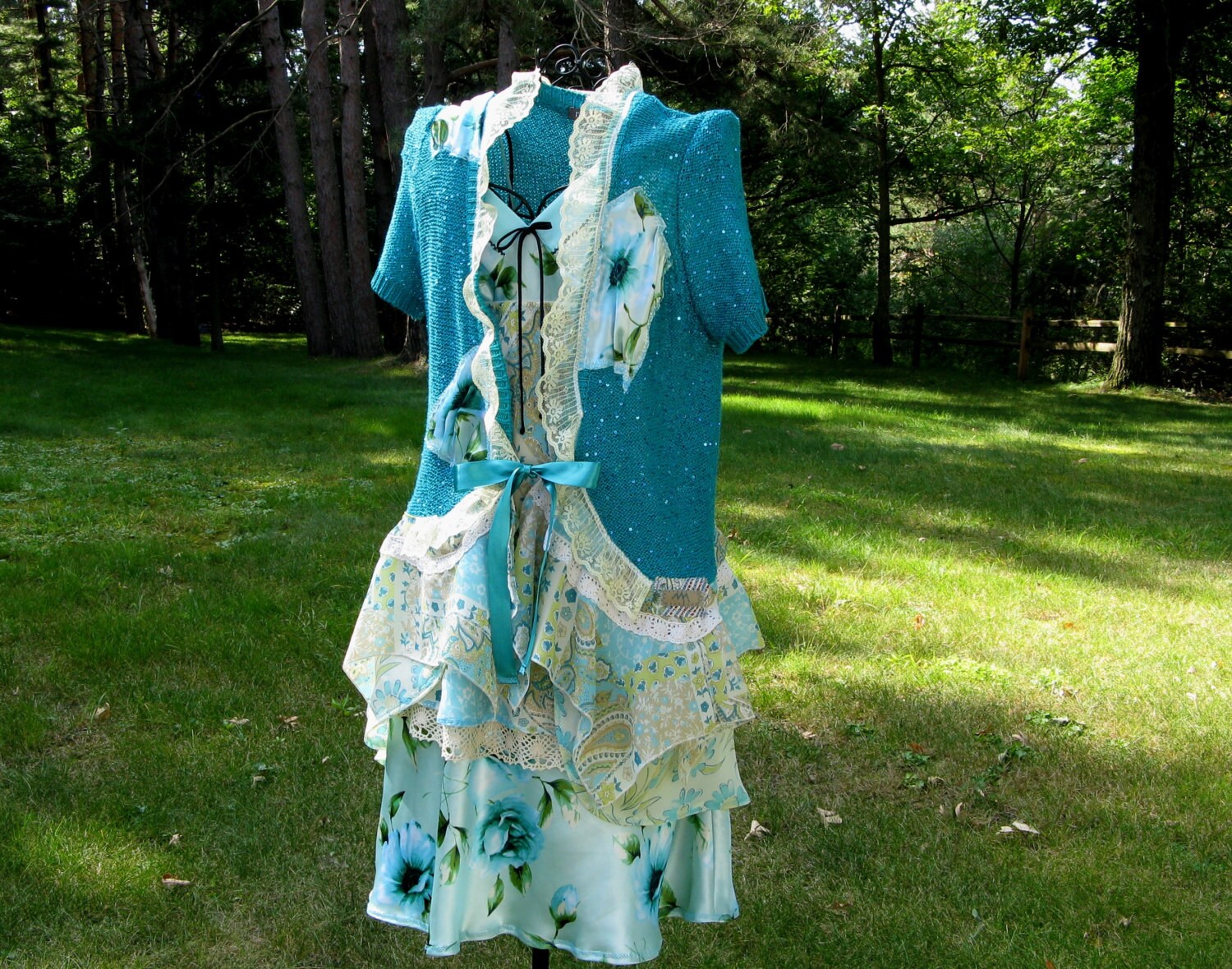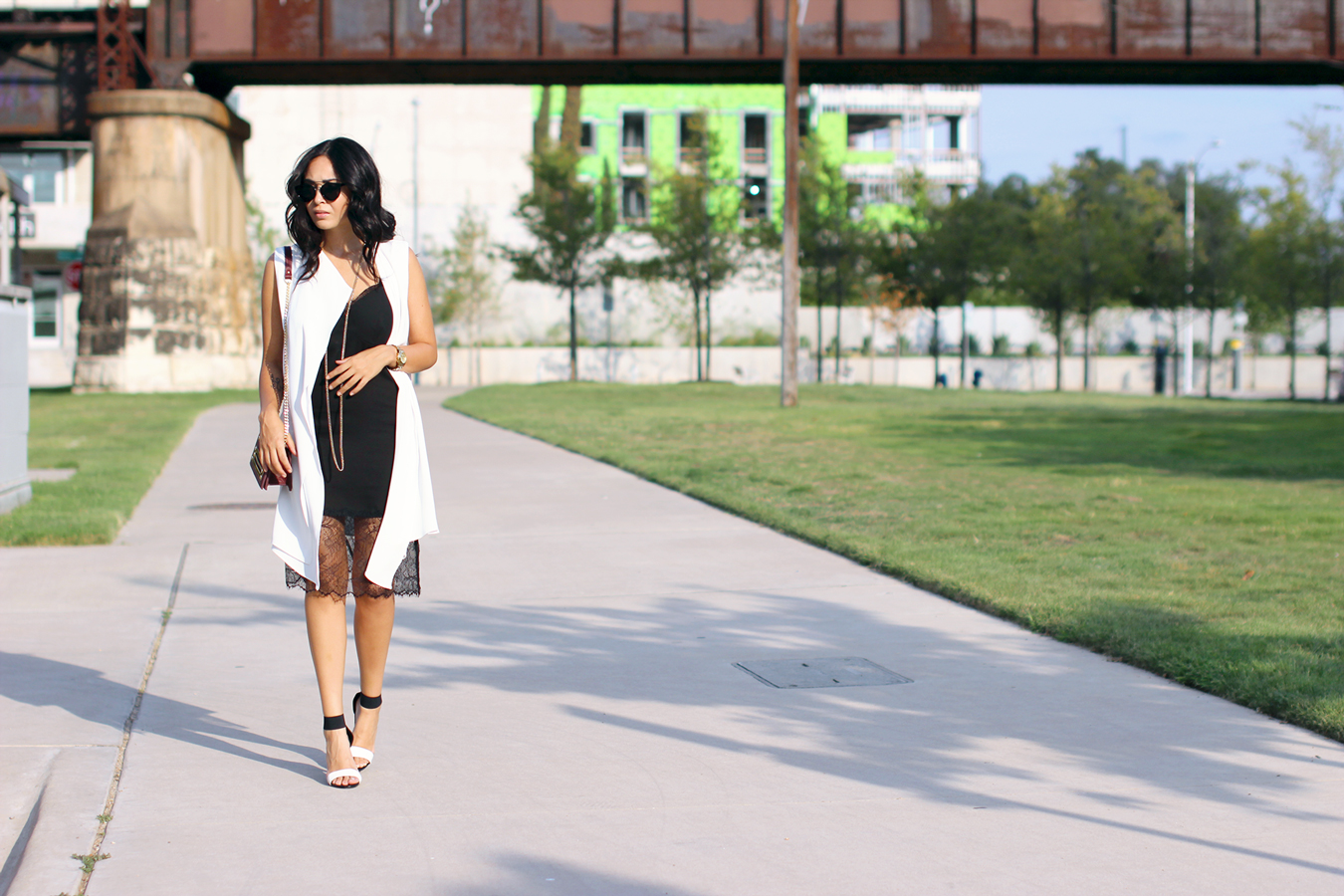Home>How-to Guides>For Women>How To Make A White Slip Dress


For Women
How To Make A White Slip Dress
Modified: July 30, 2023
Learn how to make a stunning white slip dress for women with our step-by-step guide. Perfect for any occasion, this DIY project will have you looking chic and stylish.
(Many of the links in this article redirect to a specific reviewed product. Your purchase of these products through affiliate links helps to generate commission for Under-tec.com, at no extra cost. Learn more)
Table of Contents
- Introduction
- Materials Needed
- Step 1: Choosing the Right Fabric
- Step 2: Taking Accurate Measurements
- Step 3: Cutting the Fabric
- Step 4: Sewing the Bodice
- Step 5: Sewing the Skirt
- Step 6: Attaching the Bodice and Skirt
- Step 7: Adding Straps (Optional)
- Step 8: Hemming the Dress
- Step 9: Finishing Touches
- Conclusion
Introduction
When it comes to fashion, few pieces are as versatile and timeless as a slip dress. Whether you want to create a chic and effortless look for a summer party or a stylish and elegant ensemble for a special occasion, a white slip dress is a perfect choice. The simplicity and clean lines of a white slip dress exude sophistication and can be easily dressed up or down depending on the occasion.
In this article, we will guide you through the process of making your own white slip dress. By following these steps, you can create a custom-fit dress that suits your style and body shape perfectly. Whether you have some sewing experience or are a complete beginner, this project is attainable and rewarding.
Creating your own white slip dress allows you to have complete control over the fabric, fit, and design details. You can choose a luxurious silk fabric for an elegant and luxurious feel or opt for a lightweight cotton blend for a more casual and comfortable dress. The options are endless, and you can truly make the dress your own.
Not only is making your own clothing a great way to express your creativity, but it also offers environmental benefits by reducing the demand for fast fashion. By creating high-quality garments that are made to last, you can contribute to a more sustainable fashion industry.
So, if you’re ready to embark on a fun and fulfilling project, let’s dive into the process of making your very own white slip dress. Get your sewing machine ready, gather your materials, and let’s get started!
Materials Needed
Before you begin making your white slip dress, make sure you have all the necessary materials and tools. Here’s a list of what you’ll need:
- Fabric: Choose a lightweight and breathable fabric like silk, cotton, or satin. Make sure to buy enough fabric to accommodate your measurements and any desired alterations.
- Lining Fabric: If your main fabric is sheer, consider using a lining fabric to provide opacity and comfort.
- Thread: Select a thread color that matches or complements your fabric.
- Elastic: You’ll need elastic for the waistband and optional straps.
- Scissors: A pair of fabric scissors will make cutting your fabric precise and clean.
- Pins: Use sewing pins to hold your fabric pieces together during the sewing process.
- Measuring Tape: An essential tool for accurate measurements.
- Marking Tool: A fabric marker or chalk will help you mark your fabric for cutting and sewing.
- Sewing Machine: While it is possible to sew by hand, a sewing machine will make the process faster and more efficient.
- Iron: An iron is crucial for pressing and setting seams, providing a professional finish to your dress.
- Pattern: You can either purchase a slip dress pattern or create your own by using an existing dress as a template.
- Trimmings: Optional trims such as lace or ribbon can be added to enhance the design of your dress.
Having all these materials readily available before you start will ensure a smooth and enjoyable sewing experience. Double-check that you have everything on the list to avoid any interruptions during the process. Once you have everything prepared, it’s time to move on to the next step: choosing the right fabric for your white slip dress.
Step 1: Choosing the Right Fabric
Choosing the right fabric is crucial for the success of your white slip dress. The fabric you select will not only determine the aesthetics of the dress but also its comfort and durability. Here are a few factors to consider when choosing the fabric for your dress:
- Texture: Decide on the desired texture and feel of your slip dress. If you prefer a soft and flowing fabric, opt for silk or satin. If you want a more structured and breathable fabric, cotton or linen are great options.
- Opacity: Consider whether you want your white slip dress to be sheer or opaque. If you prefer a more modest look, choose a fabric that is not too sheer or use a lining fabric.
- Drape: Think about how you want your dress to drape and flow. Some fabrics have more body and structure, while others have a more fluid and lightweight drape. Experiment with different fabrics to see which one achieves your desired look.
- Season and Occasion: Consider the season and occasion for which you’ll be wearing the dress. For a lightweight and breathable summer dress, choose a fabric like cotton or linen. For more formal events, silk or satin can add an elegant touch.
- Care Instructions: Check the care instructions for the fabric you choose. Ensure that you are comfortable with the recommended cleaning and maintenance methods.
Remember, the fabric you choose will have a significant impact on the overall appearance and comfort of your white slip dress. Take your time to explore different fabric options and consider how they align with your preferences and the intended use of the dress.
Once you have selected the perfect fabric, it’s time to move on to the next step: taking accurate measurements to ensure a proper fit for your white slip dress.
Step 2: Taking Accurate Measurements
Taking accurate measurements is a crucial step in creating a well-fitted white slip dress. By ensuring precise measurements, you can customize the dress to fit your body shape perfectly. Here’s a step-by-step guide on how to take accurate measurements:
- Bust: Measure around the fullest part of your bust, ensuring that the measuring tape is parallel to the ground.
- Waist: Measure around your natural waistline, which is typically the narrowest part of your torso.
- Hips: Measure around the fullest part of your hips, keeping the tape parallel to the ground.
- Length: Determine the desired length of your slip dress by measuring from your shoulder down to where you want the hem of the dress to fall.
- Straps (optional): If you want to add straps to your slip dress, measure the desired length and width of the straps.
When measuring, ensure that the measuring tape is snug but not too tight. It’s best to measure over undergarments or the type of clothing you plan to wear under the slip dress to ensure accuracy.
Remember to write down your measurements and keep them handy throughout the dressmaking process. Having precise measurements at hand will make it easier to adjust the pattern and cut the fabric accordingly.
Once you have your measurements, you’re ready to move on to the next step: cutting the fabric for your white slip dress.
Step 3: Cutting the Fabric
Now that you have your measurements ready, it’s time to cut the fabric for your white slip dress. This step requires precision and attention to detail to ensure that the pieces fit together seamlessly. Here’s a step-by-step guide on how to cut the fabric:
- Prepare your fabric: Lay your fabric flat on a clean surface, ensuring that it is wrinkle-free. If your fabric has any wrinkles, use an iron to gently remove them.
- Fold the fabric: Fold your fabric in half lengthwise, aligning the selvage edges and ensuring that the wrong side of the fabric is facing out. This will create a mirrored effect when you cut the pieces.
- Place the pattern: Take your slip dress pattern and carefully position it on the folded fabric. Pay attention to the grainline and ensure that it is parallel to the selvage edge.
- Pin the pattern: Use sewing pins to secure the pattern to the fabric. Make sure the pattern is securely pinned, preventing any shifts during the cutting process.
- Cut the fabric: Using fabric scissors, carefully cut along the edges of the pattern. Take your time to make precise cuts, following the lines of the pattern. Be cautious not to cut through any important markings or notches.
- Repeat for lining and other pieces: If your slip dress requires a lining or additional fabric pieces, repeat the same process for those as well. Ensure that the lining fabric aligns with the main fabric.
As you cut the fabric, double-check your measurements to ensure accuracy. Take your time and cut slowly to avoid any mistakes or uneven edges. If there are any curves or intricate details, consider using smaller scissors or pinking shears for cleaner and more precise cuts.
Once you have all the fabric pieces cut out, remove the pins and carefully separate them. Keep the pieces organized and labeled to make the sewing process smoother.
Now that the fabric is cut, you’re ready to move on to the next step: sewing the bodice of your white slip dress.
Step 4: Sewing the Bodice
With the fabric pieces cut and ready, it’s time to sew the bodice of your white slip dress. The bodice is the upper part of the dress that covers the chest and torso. This step will involve sewing the front and back bodice pieces together, creating a structured and fitted top. Here’s a helpful guide on how to sew the bodice:
- Prepare the pieces: Take the front and back bodice pieces and place them right sides together, aligning the raw edges. Pin the pieces together to hold them in place.
- Start sewing: Using a sewing machine or hand sewing, sew along the pinned edges, starting from the top and working your way down to the waistline. Use a straight stitch and a seam allowance that matches your pattern instructions or personal preference.
- Finish the seams: After sewing, finish the raw edges of the seam allowance to prevent fraying. You can use a serger, pinking shears, or a zigzag stitch on your sewing machine.
- Press the seams: Press the seams flat with an iron, using a pressing cloth if necessary. This will help create a neater finish and ensure that the seams lay flat.
- Fitting adjustments: Try on the bodice to check the fit. If any adjustments are needed, such as taking in or letting out the seams, make the necessary changes before moving on to the next step.
When sewing the bodice, it’s important to take your time and sew accurately. Double-check your stitching and make sure to backstitch at the beginning and end of each seam to secure the stitches.
Once the bodice is complete, set it aside and move on to the next step: sewing the skirt of your white slip dress.
Step 5: Sewing the Skirt
After completing the bodice, it’s time to sew the skirt of your white slip dress. The skirt is the lower part of the dress that falls from the waistline to the desired length. This step will involve attaching the skirt pieces together and creating a flowing and elegant shape. Here’s a step-by-step guide on how to sew the skirt:
- Prepare the skirt pieces: Take the front and back skirt pieces and place them right sides together, aligning the side seams. Pin the pieces together to hold them in place.
- Sew the side seams: Using a sewing machine or hand sewing, sew along the pinned side seams, starting from the waistline and working your way down to the hem. Use a straight stitch and a seam allowance that matches your pattern instructions or personal preference.
- Finish the seams: After sewing, finish the raw edges of the side seam allowance to prevent fraying. Use a serger, pinking shears, or a zigzag stitch on your sewing machine.
- Press the seams: Press the side seams open with an iron, using a pressing cloth if necessary. This will help create a smooth finish and ensure that the seams lay flat.
- Gather the waist: To create a gathered waistline, sew two rows of basting stitches along the top edge of the skirt. Leave long thread tails at each end to make gathering easier.
- Gently pull the basting threads to gather the waist, distributing the gathers evenly. Adjust the gathers to match the width of the bodice.
- Attach the bodice and skirt: With the bodice turned right side out and the skirt turned wrong side out, place the bodice inside the skirt, aligning the raw edges of the waistline. Pin the pieces together, making sure the side seams match up.
- Sew the bodice and skirt together, removing the basting stitches as you go. Use a straight stitch and a seam allowance that matches your pattern instructions or personal preference.
When sewing the skirt, pay attention to the alignment of the side seams and the even distribution of gathers. Take your time to sew accurately and ensure that the stitches are secure.
After sewing the skirt, press the waistline seam to one side and give it a final press. Your white slip dress is now starting to take shape! In the next step, we’ll explore how to add straps as an optional detail.
Step 6: Attaching the Bodice and Skirt
Now that you have sewn the bodice and the skirt separately, it’s time to bring them together and attach them to create a cohesive white slip dress. Attaching the bodice and skirt is an important step in ensuring a seamless and polished final look. Here’s a step-by-step guide on how to attach the bodice and skirt:
- Preparing the pieces: Turn the bodice right side out and the skirt wrong side out. Ensure that the skirt is positioned with the wrong side facing up.
- Align the waistlines: Place the bodice inside the skirt, aligning the waistlines and matching the side seams. Pin the pieces together, making sure to distribute the gathers evenly.
- Sew the waistline seam: Using a sewing machine or hand sewing, sew along the pinned waistline, securing the bodice and skirt together. Use a straight stitch and a seam allowance that matches your pattern instructions or personal preference.
- Finish the waistline seam: After sewing, finish the raw edges of the waistline seam to prevent fraying. You can use a serger, pinking shears, or a zigzag stitch.
- Press the waistline seam: Press the waistline seam up towards the bodice, using an iron and a pressing cloth if necessary. This will create a clean and finished look.
Take your time when aligning and sewing the bodice and skirt together to ensure accuracy and a professional finish. Make sure the gathers are evenly distributed and the seams are securely sewn.
Attaching the bodice and skirt is a significant step towards completing your white slip dress. With the major components coming together, you’re one step closer to enjoying your handmade creation. In the next step, we’ll explore adding straps as an optional detail to the dress.
Step 7: Adding Straps (Optional)
Adding straps to your white slip dress can not only provide extra support but also add a stylish and customizable touch. Whether you prefer delicate spaghetti straps or wider shoulder straps, this step allows you to personalize your dress according to your preference. Here’s a step-by-step guide on how to add straps:
- Decide on the strap style: Determine the desired width and length of your straps. You can choose to make them adjustable or fixed in length, depending on your preference.
- Prepare the strap fabric: Cut two strips of fabric according to your desired strap width and length. Make sure the fabric is durable and matches or complements your slip dress.
- Fold and press the straps: Fold each fabric strip in half lengthwise, with the wrong sides together. Press the fold with an iron to create a crisp crease.
- Sew the straps: Using a sewing machine or hand sewing, stitch along the open edge of each strap, securing the fold in place. You can use a straight stitch or a decorative stitch, depending on the desired look.
- Attach the straps to the bodice: Place one end of each strap to the front and back neckline of the bodice. Pin the straps in place, making sure they are evenly spaced and aligned with the side seams.
- Sew the straps to the bodice: Sew the straps to the neckline of the bodice, ensuring that the stitches are secure. You can reinforce the strap attachment by sewing a small rectangle or cross pattern at the end of each strap.
When adding straps, feel free to experiment with different styles and embellishments. You can add decorative elements such as bows, buttons, or lace trim to enhance the straps’ appearance.
Once the straps are attached, try on your slip dress to ensure that they are the desired length and provide the desired fit. Make any necessary adjustments before moving on to the next step.
Adding straps is an optional detail that can enhance the functionality and style of your white slip dress. In the next step, we’ll explore how to hem the dress for a polished and finished look.
Step 8: Hemming the Dress
Hemming the dress is the final step in creating a polished and finished look for your white slip dress. It involves sewing a clean and even hem along the bottom edge of the dress to prevent fraying and give it a professional appearance. Here’s a step-by-step guide on how to hem your dress:
- Try on the dress: Put on your slip dress and stand in front of a mirror. This will allow you to determine the desired length and make any necessary adjustments before hemming.
- Mark the hemline: Using a fabric marker, chalk, or pins, mark the desired length of your dress. Make sure the marks are even and align with your personal style and preferences.
- Prepare the hem: Fold the bottom edge of the dress up to the marked hemline, with the wrong side of the fabric facing out. The width of the fold should match your desired hem allowance, typically around 1/2 inch to 1 inch.
- Press the folded hem: Use an iron to press the folded hem in place, ensuring a crisp and neat fold. Take your time and make sure the fold is even all the way around the dress.
- Sew the hem: Starting at one side seam, begin sewing the hem using a straight stitch. Sew along the folded edge, keeping the stitching close to the edge for a clean finish. Backstitch at the beginning and end to secure the stitches.
- Finish the hem: After sewing, trim any excess fabric from the folded hem if necessary. You can also finish the raw edge with a zigzag stitch to prevent fraying.
- Press the hem: Give the hemline a final press with an iron, using a pressing cloth if necessary. This will help set the stitches and create a smooth and professional-looking hem.
When hemming your dress, take your time and sew accurately to ensure a straight and even hemline. It’s important to maintain a consistent stitch length throughout the hemming process.
Once the hem is complete, your white slip dress is ready to be showcased and worn with confidence.
Step 9: Finishing Touches
Now that you have completed the main construction of your white slip dress, it’s time to add those final finishing touches that will elevate its overall look. These finishing touches can include adding decorative elements, making adjustments for a better fit, and ensuring that the dress is perfectly prepared for wear. Here are some suggestions for the final steps:
- Check the fit: Try on the dress one last time to ensure that it fits comfortably and flatters your body shape. Take note of any areas that may need minor adjustments such as tightening or loosening seams, or trimming excess fabric.
- Add embellishments: Consider adding some decorative elements to enhance the design of your white slip dress. This can include lace trims, beading, embroidery, or appliques. Use your creativity to customize the dress and make it uniquely yours.
- Press the dress: Give the entire dress a final press with an iron, paying attention to smooth out any wrinkles or creases. Pressing will give your dress a polished and professional look.
- Try different styling options: Experiment with different accessories such as belts, scarves, or statement jewelry to elevate the look of your slip dress. Try different hairstyles and shoes to find the perfect combination for your desired style.
- Hang or fold the dress: Store your completed white slip dress properly by either hanging it on a sturdy hanger or carefully folding it and storing it in a garment bag. Make sure to protect the dress from dust and sunlight to maintain its quality.
The finishing touches are what truly make your white slip dress unique and tailored to your personal style. Take your time to add those final embellishments and make any necessary adjustments to ensure that the dress fits and flatters you perfectly.
By following these steps, you have successfully created your own white slip dress from start to finish. Be proud of your handiwork and enjoy wearing your one-of-a-kind creation!
Conclusion
Congratulations! You have completed the process of making your very own white slip dress. Through careful fabric selection, accurate measurements, precise cutting, and skillful sewing, you have created a custom-fit dress that reflects your personal style and creativity.
Making your own clothing is not only a fulfilling and rewarding experience but also a sustainable choice that reduces reliance on fast fashion and promotes individuality. By creating a timeless and versatile piece like a white slip dress, you have created a garment that can be worn for various occasions and styled in different ways.
Remember, the steps we discussed – choosing the right fabric, taking accurate measurements, cutting the fabric, sewing the bodice and skirt, attaching the bodice and skirt, adding straps (optional), hemming the dress, and adding finishing touches – are essential to achieving a well-fitted and professionally finished white slip dress.
Now it’s time to enjoy your beautiful creation. Whether you wear it to a summer soiree, a romantic dinner, or a casual outing, your white slip dress is sure to turn heads and make you feel confident and elegant.
Feel free to explore different styling options and experiment with accessories to create an endless array of looks. Your white slip dress can be dressed up with heels and statement jewelry for a formal event or paired with sandals and a denim jacket for a more relaxed and casual look.
Remember to take care of your dress by following the care instructions for the fabric you chose. Proper storage and maintenance will ensure that your white slip dress remains in excellent condition and continues to be a wardrobe staple for years to come.
Now that you have the skills and knowledge to create your own white slip dress, consider applying these techniques to other clothing projects and expand your sewing repertoire. The possibilities are limitless!
Enjoy the process of sewing and expressing your personal style through handmade garments. Embrace your creativity and continue to explore the wonderful world of fashion and self-expression through sewing.










